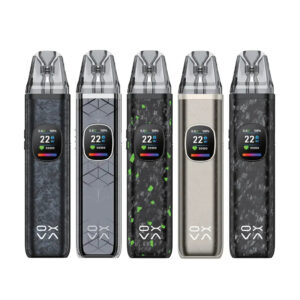
Can You Vape While on Medication? What You Should Know
Vaping has transformed from a niche alternative to smoking into a mainstream phenomenon across the UK. Millions of people now use vape pods, starter kits and various vaping devices as part of their daily routine, whether transitioning away from traditional cigarettes or exploring vaping as a lifestyle choice.
When you’re taking prescription medications, the relationship between vaping and your treatment becomes significantly more complex. The chemicals in e-liquids, particularly nicotine, can interact with your body’s natural processes in ways that may affect how your medications work. These interactions aren’t always obvious and many people remain unaware of the potential vaping risks when combined with their prescribed treatments.
Understanding medication interactions with vaping is crucial for maintaining your health and ensuring your treatments remain effective. The consequences of overlooking these interactions can range from reduced medication effectiveness to unexpected side effects that compromise your wellbeing.
This comprehensive guide examines the science behind vaping while on medication, exploring how different drug types may be affected and providing practical guidance to help you make informed decisions about your health and vaping habits.
Understanding Vaping and Its Components
Vaping involves heating a liquid solution to create an aerosol that users inhale through electronic devices. E-cigarettes come in various forms, from simple starter kits designed for beginners transitioning from traditional cigarettes to advanced mods and customisable pod systems for experienced users. These devices work by heating e-liquids in tanks or cartridges, producing vapour without combustion.
What is in Vape Juice?
The composition of vape juice typically includes four primary ingredients:
- Propylene glycol (PG)
- Vegetable glycerine (VG)
- Flavourings
- Often nicotine
- Propylene glycol serves as a carrier for flavours and creates the throat hit sensation.
- Vegetable glycerine produces the visible vapour clouds.
- Nicotine levels vary significantly across products, ranging from nicotine-free options to high-strength nicotine salts that deliver rapid absorption.
How Do Chemicals in Vape Juice Affect the Body?
Vape juice chemicals can affect the body in different ways:
- Nicotine effects include increased heart rate, elevated blood pressure and potential addiction.
- The heating process may also create additional compounds, though research continues to examine their long-term implications.
- Some flavouring chemicals, particularly those used in sweet or dessert flavours, have raised health concerns when inhaled regularly.
How Do Different Device Types Impact Chemical Exposure?
Different device types deliver varying concentrations of these substances:
- Basic starter kits typically provide controlled nicotine delivery.
- Advanced mods allow users to adjust power settings and vapour production, potentially altering chemical exposure levels.
How Vaping Can Affect Medication Effectiveness
Your liver plays a crucial role in processing medications through specialised proteins called liver enzymes. These enzymes break down drugs in your system, determining how long medications remain active and how effectively they work in your body.
Vaping introduces chemicals that can significantly alter liver enzyme activity. Nicotine and other compounds found in e-liquids act as enzyme inducers, causing your liver to work faster and more aggressively when processing medications. This acceleration in medication metabolism can lead to several concerning outcomes:
Changes in Drug Levels:
- Medications may be cleared from your system more rapidly than intended
- Therapeutic drug levels may drop below effective ranges
- Standard dosing may become insufficient for proper treatment
Impact on Treatment Efficacy: The enhanced liver enzyme activity triggered by vaping can reduce the concentration of active medication in your bloodstream. When drug levels fall below therapeutic thresholds, your treatment may become less effective or completely ineffective.
Timing Considerations: Drug interactions with vaping don’t require simultaneous use. The enzyme-inducing effects can persist for hours or even days after vaping, continuing to influence how your body processes medications long after your last vaping session.
This metabolic interference affects various medication types differently, with some drugs being more susceptible to these changes than others. Understanding these interactions becomes essential when managing any medical condition requiring consistent medication levels. For instance, the altered metabolism caused by vaping can significantly impact the effectiveness of certain medications, as noted in this study.
Vaping and Specific Medication Types
Different categories of medications interact with vaping in unique ways, creating specific risks and considerations for users. Understanding these interactions helps you make better decisions about your treatment and lifestyle choices.
Vaping and Antidepressants
Antidepressants and vaping present a complex relationship that affects both medication effectiveness and mental health outcomes. The nicotine in vape products significantly impacts how your body processes common antidepressants like sertraline (Zoloft), fluoxetine (Prozac) and other selective serotonin reuptake inhibitors (SSRIs).
When you vape, nicotine stimulates the CYP1A2 enzyme system in your liver, which plays a crucial role in breaking down many antidepressants. This enhanced enzyme activity leads to faster metabolism of your medication, potentially reducing the therapeutic levels in your bloodstream. For someone taking sertraline, this could mean their prescribed dose becomes less effective at managing depression or anxiety symptoms.
Mental health medication interactions extend beyond simple metabolism changes. Research indicates that nicotine use, whether through vaping or smoking, can directly interfere with the neurochemical balance that antidepressants work to restore. The temporary mood elevation from nicotine often masks underlying mental health issues, creating a cycle where users may not recognise when their medication becomes less effective.
2. Vaping and Antibiotics
The relationship between antibiotics interaction with vaping remains an area where scientific research is still developing. Current evidence suggests potential concerns about how vaping might influence antibiotic effectiveness during infection recovery and vaping periods.
Limited Research Landscape
Studies examining the direct interaction between vaping and antibiotic medications are scarce compared to other drug interactions. However, preliminary research indicates that certain chemicals found in e-liquids may interfere with how antibiotics are processed within the body. This gap in research creates uncertainty for patients who vape while undergoing antibiotic treatment.
Potential Mechanisms of Interference
Vape chemicals, particularly those used as flavouring agents and carriers like propylene glycol and vegetable glycerine, may affect the liver’s ability to metabolise antibiotics effectively. The cytochrome P450 enzyme system, responsible for breaking down many medications, could potentially be influenced by regular exposure to these substances.
Clinical Implications
Reduced antibiotic effectiveness poses serious health risks, particularly for patients fighting bacterial infections. When antibiotics fail to reach therapeutic levels in the bloodstream, infections may persist longer, potentially leading to:
- Prolonged illness duration
- Development of antibiotic-resistant bacteria
- Need for stronger or alternative medications
- Increased risk of complications
Patients taking antibiotics should discuss their vaping habits with healthcare providers to ensure optimal treatment outcomes and appropriate monitoring during their recovery period.
Vaping While Breastfeeding: What You Need to Know
Breastfeeding mothers face unique considerations when it comes to vaping, as nicotine and other chemicals can transfer directly to infants through breast milk. Research shows that nicotine levels in breast milk can be two to three times higher than those found in maternal blood plasma, creating significant exposure risks for nursing babies.
The transfer occurs rapidly after vaping, with peak nicotine concentrations appearing in breast milk within 30 minutes. This exposure puts infants at risk for several serious health complications:
- Sudden Infant Death Syndrome (SIDS): Studies indicate increased SIDS risk when mothers use nicotine products during breastfeeding
- Respiratory complications: Babies may develop breathing difficulties, wheezing and increased susceptibility to respiratory infections
- Ear infections: Higher rates of otitis media occur in infants exposed to nicotine through breast milk
- Sleep disruption: Nicotine can interfere with infant sleep patterns and feeding behaviours
Secondhand vapour exposure presents additional risks, as infants’ developing lungs are particularly vulnerable to airborne chemicals. The combination of direct nicotine transfer through breast milk and environmental exposure creates a double risk factor that breastfeeding mothers must carefully consider when evaluating their vaping habits.
Health Risks Associated with Vaping During Medication Use
The combination of vaping and prescription medications presents several health risks vaping medication users should carefully consider. Nicotine and other vaping chemicals can amplify existing medication side effects, creating potentially dangerous interactions that compromise your treatment plan.
Key risks include:
- Cardiovascular complications – Nicotine increases heart rate and blood pressure, which can be problematic when combined with medications that affect cardiovascular function
- Respiratory interference – Vaping can worsen breathing difficulties in patients taking medications for respiratory conditions
- Altered drug absorption – Chemical compounds in e-liquids may interfere with how your body processes certain medications through the digestive system
- Enhanced anxiety symptoms – Nicotine side effects can intensify anxiety-related medication side effects, creating a cycle of increased symptoms
The unpredictable nature of these interactions means that even medications you have taken successfully for months or years may behave differently when combined with regular vaping. Your body’s response to treatment can become less predictable, making it harder for healthcare providers to adjust dosages appropriately and monitor your progress effectively.
Practical Advice for People Who Vape While on Medication
Open communication with healthcare professionals is essential for safe medication management when vaping. Your doctor or pharmacist needs to know everything about your vaping habits in order to give you accurate advice that takes into account your specific medications and health conditions.
When talking to healthcare professionals, make sure to share the following information:
- How often you vape throughout the day
- The nicotine strength of your e-liquids
- The types of devices you use (starter kits, mods or pod systems)
- How long you’ve been vaping
- Any changes in how effective your medication has been that you’ve noticed
Healthcare providers can adjust dosages or timing of medications based on how vaping might affect your body’s processing of drugs. They may recommend monitoring blood levels more frequently for certain medications or suggest alternative treatments that interact less with vaping components.
Conclusion
Understanding the relationship between vaping and medication requires careful consideration of your individual circumstances. The question “Can You Vape While on Medication?” doesn’t have a universal answer, as interactions vary significantly between different medications and personal health profiles.
Your healthcare provider remains your most valuable resource when navigating these decisions. They can provide personalised guidance based on your specific medications, dosages and health conditions. Safe vaping practices for medication users begin with transparent communication about your vaping habits during medical consultations.
Making informed choices about your health means weighing the potential benefits of vaping as a smoking cessation tool against possible medication interactions. Whether you’re considering switching from traditional cigarettes or evaluating your current vaping routine, professional medical advice ensures you maintain both your treatment effectiveness and your journey towards better health outcomes.
FAQs
Can you vape while on medication safely?
Vaping while on medication can affect how your medications work due to interactions with liver enzymes and chemicals in vape juice. It’s important to understand these potential effects and consult healthcare professionals before vaping during medication use.
How does vaping impact the effectiveness of antidepressants?
Vaping may speed up the metabolism of antidepressants like sertraline (Zoloft), potentially reducing their levels and effectiveness. Additionally, vaping and smoking have been linked to worsening mental health symptoms such as anxiety and depression.
Does vaping interfere with antibiotics or infection recovery?
Although research is limited, vaping chemicals might affect the breakdown of antibiotics in the body, potentially reducing their effectiveness and impacting infection recovery. Caution is advised when vaping while taking antibiotics.
Is it safe to vape while breastfeeding?
Vaping during breastfeeding poses risks as nicotine and harmful chemicals can transfer through breast milk or secondhand exposure, increasing risks for infants including sudden infant death syndrome (SIDS), respiratory issues and ear infections.
What are the general health risks of combining vaping with medications?
Combining vaping with medication use may increase side effects or decrease treatment efficacy due to interactions between vape chemicals and drug metabolism. Being aware of these risks helps in making informed health decisions.




